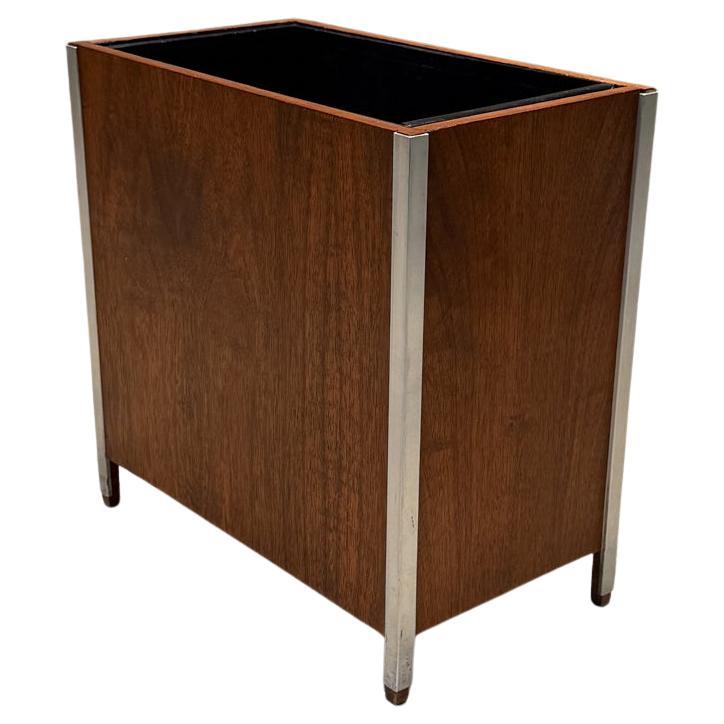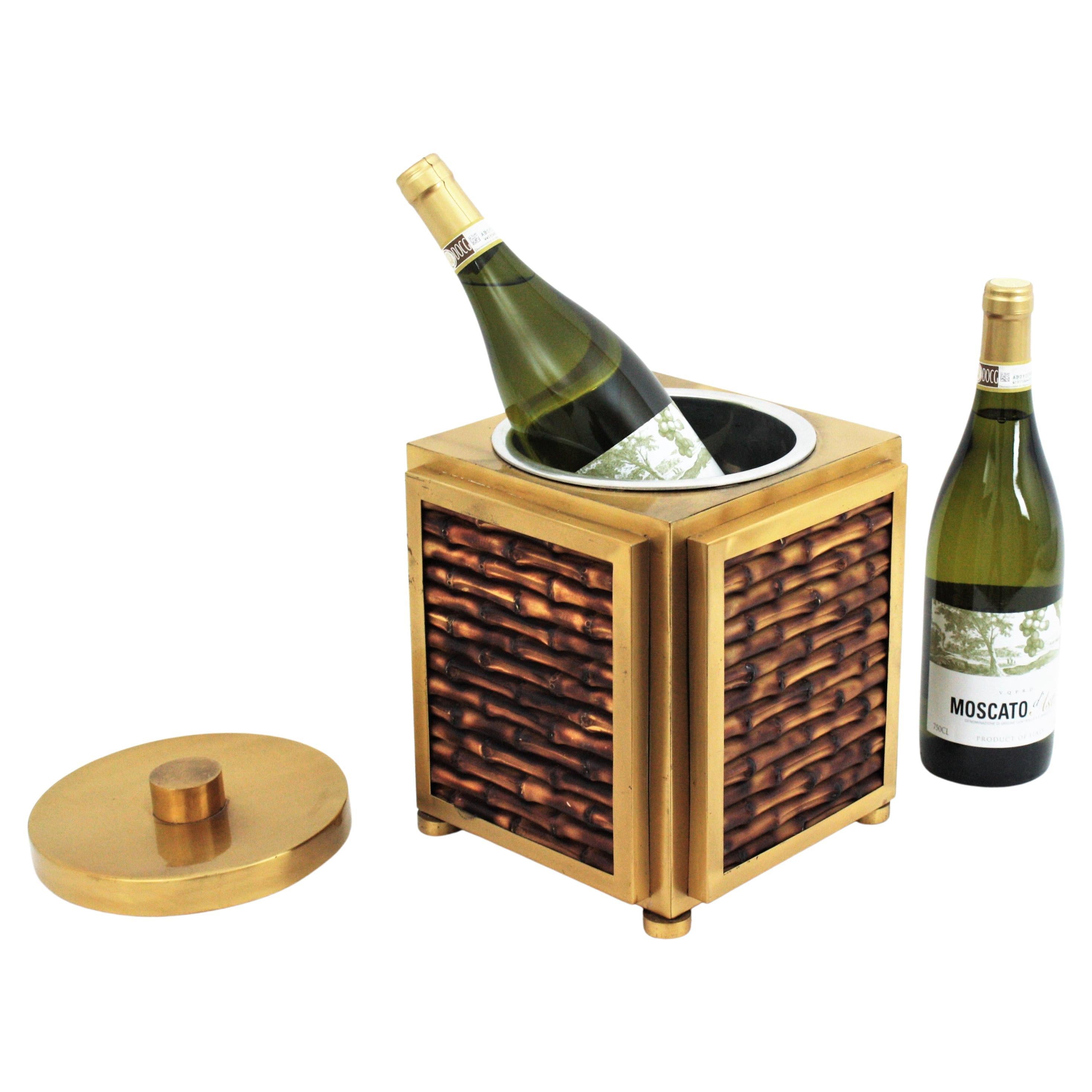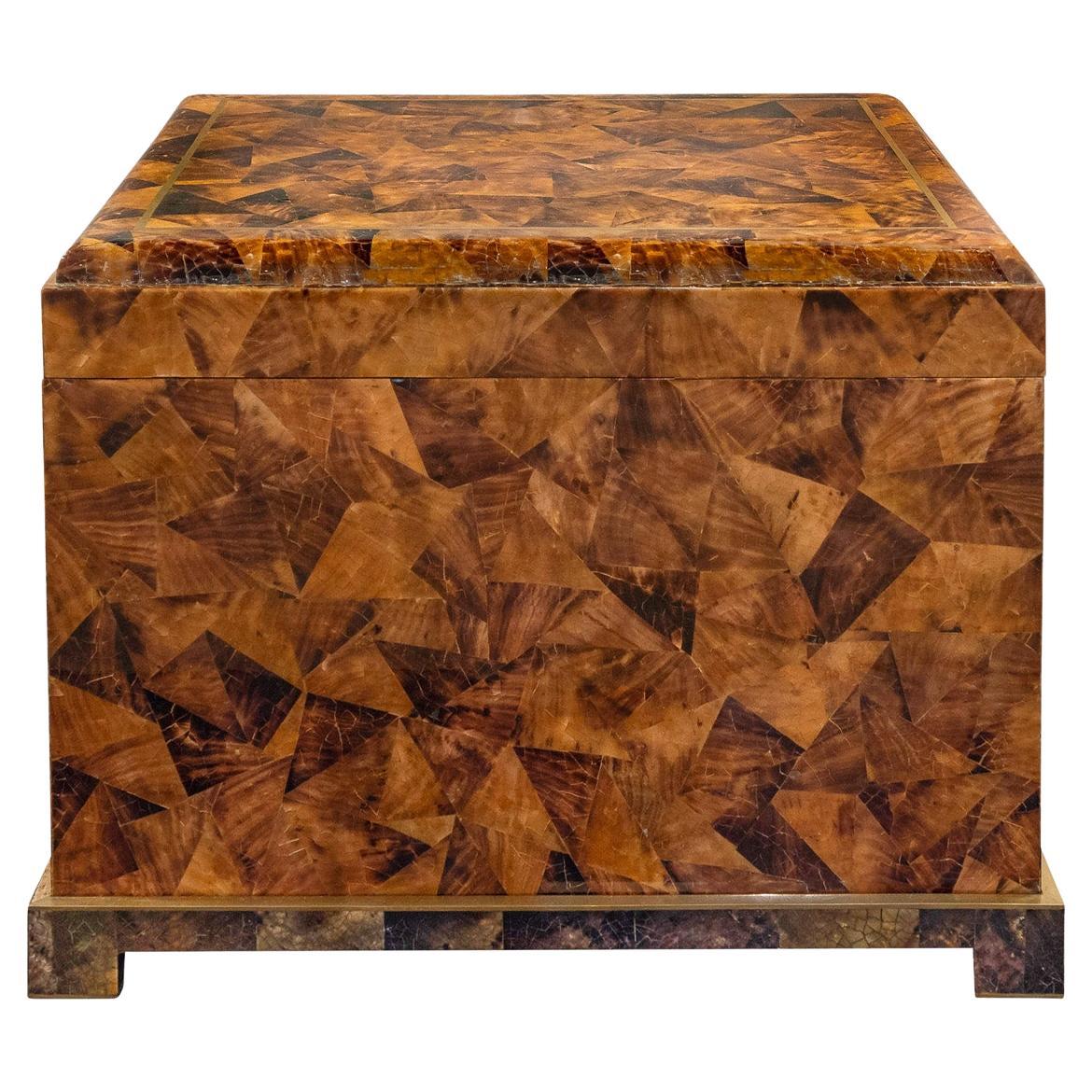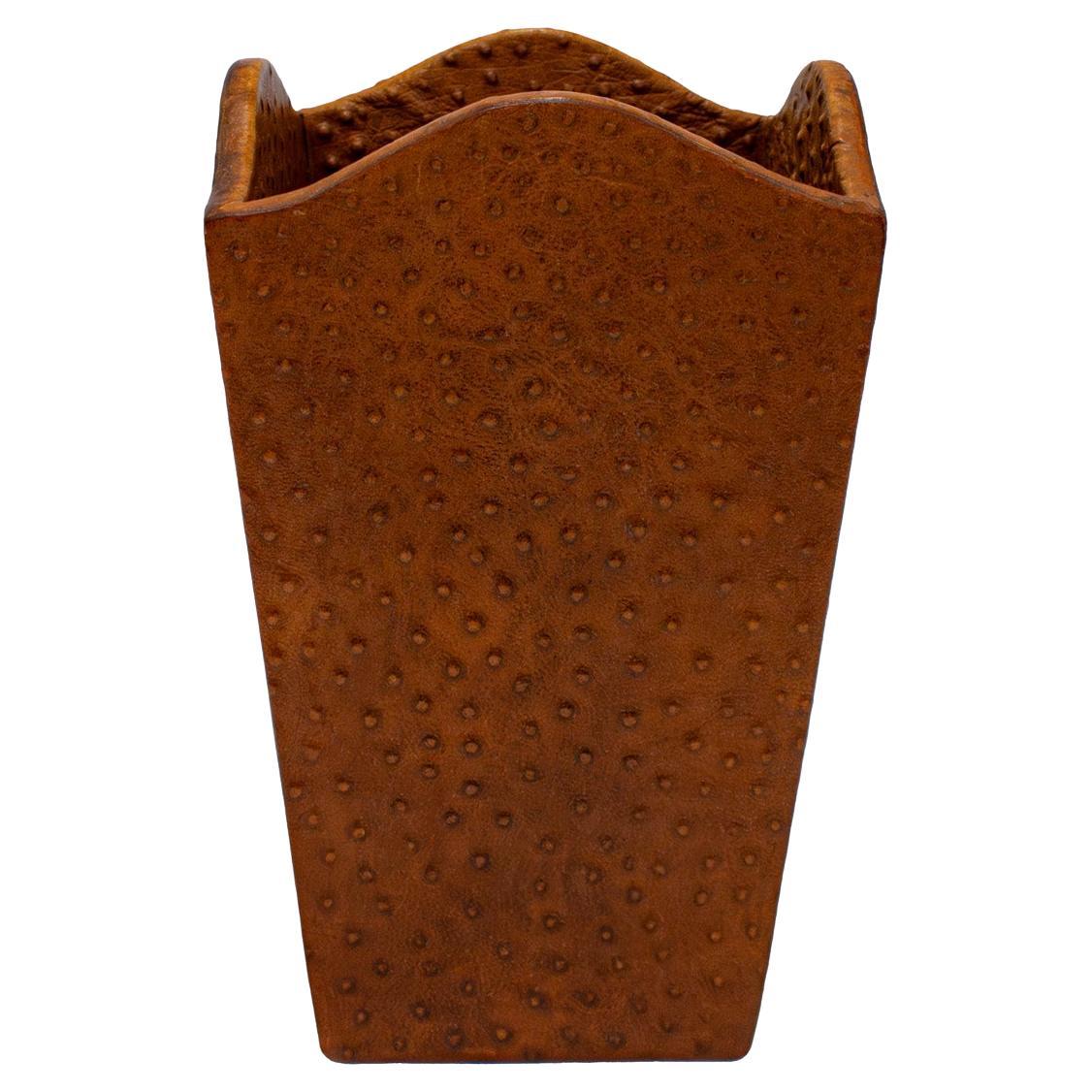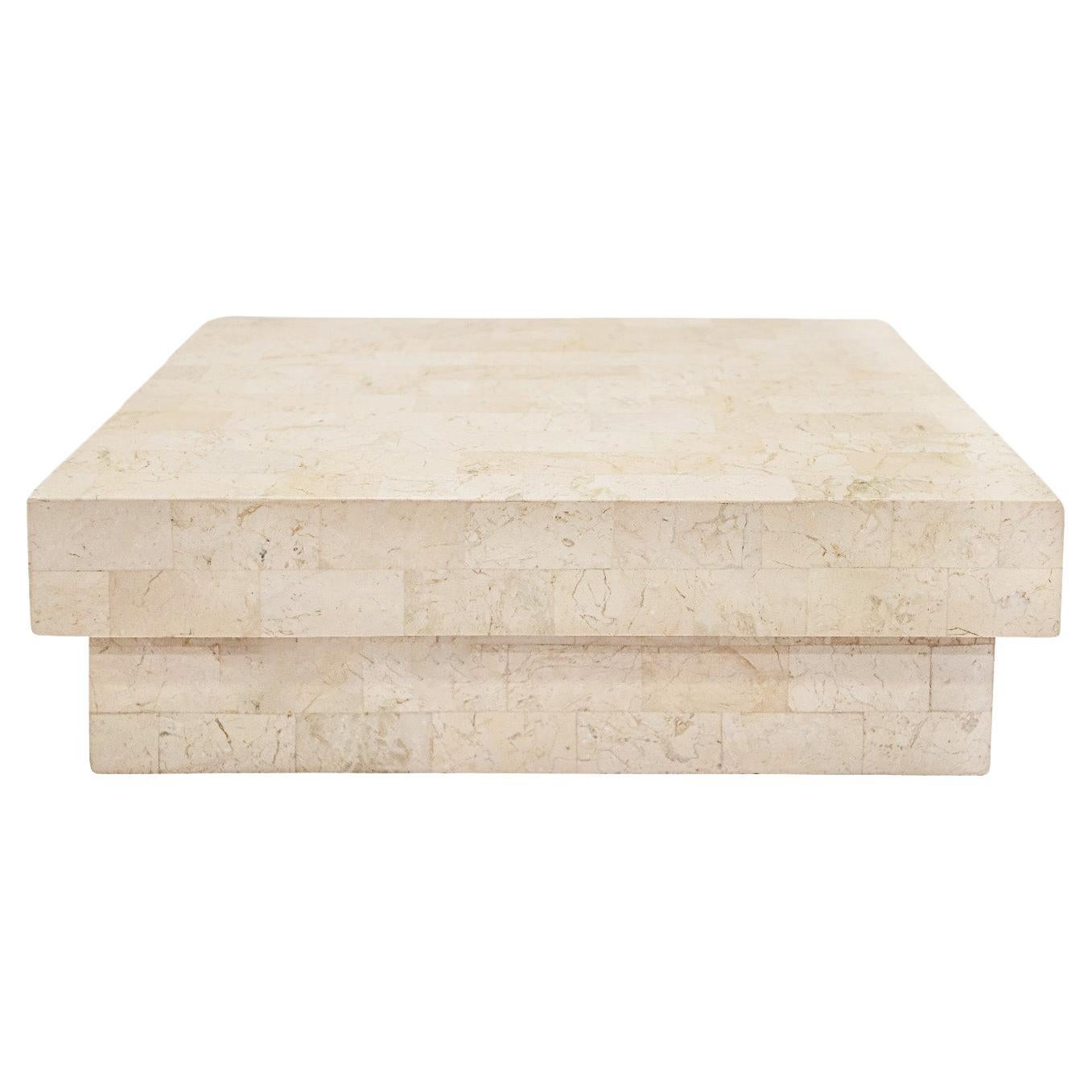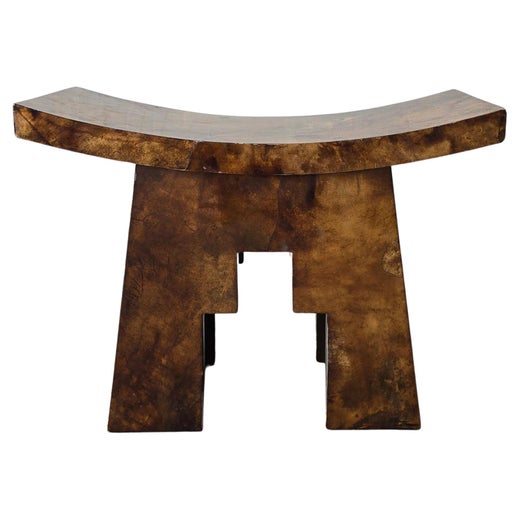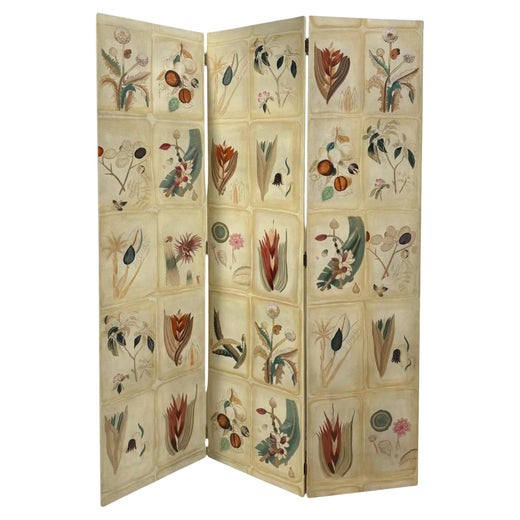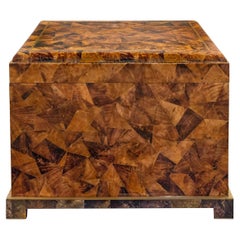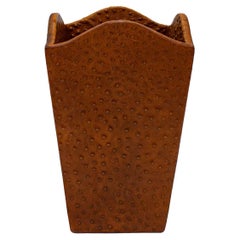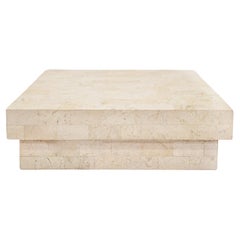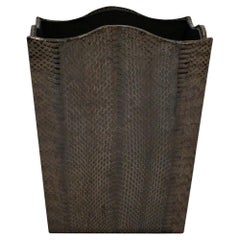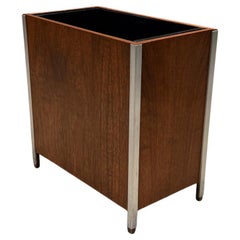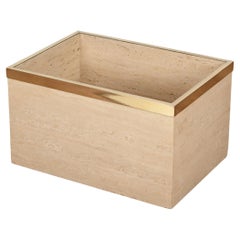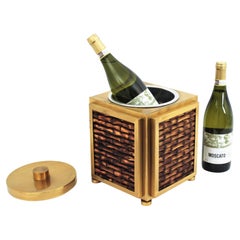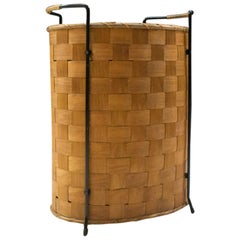Karl Springer Waste Basket in Tessellated Travertine, 1980s
About the Item
- Creator:Karl Springer (Designer),Maitland Smith (Workshop/Studio)
- Dimensions:Height: 11 in (27.94 cm)Width: 10.75 in (27.31 cm)Depth: 10.75 in (27.31 cm)
- Style:Modern (Of the Period)
- Materials and Techniques:
- Place of Origin:
- Period:1980-1989
- Date of Manufacture:1980s
- Condition:
- Seller Location:New York, NY
- Reference Number:Seller: accessory2151stDibs: LU783826340642
Karl Springer
The Berlin-born, New York–based designer Karl Springer brought a chic, high-fashion sensibility to his coffee tables, mirrors, Lucite lamps and other furnishings. During his heyday in the 1970s, Springer’s work was a favorite of the glamour set, who enjoyed the novelty of pieces finished in rich and striking materials that ranged from exotic hides and skins to lacquer and chromed metal.
In a sense, Springer was a pre-postmodernist. Much as the dull, safe, corporate sameness of late 20th-century modernism prompted Ettore Sottsass, Michael Graves and others to explore new and provocative structures and materials in design and architecture, so, too, was Springer driven to enliven his creations with fresh and alluring energy and sleekness.
Springer came to New York in the late 1950s and found work arranging window displays at the department store Lord & Taylor. He had studied bookbinding in Germany, and, using his meticulous skills, he began crafting desk accessories wrapped in leather as a sideline. These pieces were sold in luxury stores like Bergdorf Goodman and drew a sophisticated clientele that included the Duchess of Windsor.
By 1965, Springer had established his own Manhattan atelier. It was Pierre Scapula, decorator to Jackie and Aristotle Onassis, who spotted Springer's disco-era Onassis chairs — which didn't yet have a name — first commissioned for a private residence in Acapulco, on the floor of the designer’s East 61st Street showroom. Jackie ordered barstools for the couple’s yacht, the Christina O, and dining chairs for their house on the Greek mainland.
At the time of his death, Springer had showrooms as far afield as Los Angeles, Tokyo and Munich.
The chairs, tables, credenzas and other furniture forms Springer created are generally simple, but substantial, and often have robust, rounded lines. The appeal of his work lies in Springer's insistence on exacting construction and, above all, his eye for unusual materials and finishes.
Springer employed Lucite, brass, and gunmetal along with chromed and polished steel, and revived exquisite finishes rarely seen since the days of Art Deco masters such as Émile-Jacques Ruhlmann and Jean-Michel Frank: shagreen (a type of sharkskin), python, goatskin, bone, horn, and lacquered parchment, as well as fabrics that include batik prints. Made of such materials, Springer’s work is by its very nature flamboyant and eye-catching: a suite of pieces will astonish, and an artfully placed side table in exotic hide will add a surprising spark.
Find a collection of vintage Karl Springer furniture today on 1stDibs.
Maitland Smith
The eclectic furnishings of Maitland-Smith celebrate artisan skills in an age of machines. Hand-carved woodwork, inlaid marquetry, painted detailing, gilding and lost wax casting lend the company’s decorative accents an artistic flair. Focused on pieces that add a dynamic flourish to an interior by incorporating tactile materials like leather, seashell inlays and crushed eggshell, the manufacturer draws inspiration across centuries, from the curvy forms of the Louis XV period to the geometric angles of mid-century modernism.
Paul Maitland-Smith established the company in Hong Kong in 1979, after getting his start in London in the 1950s as an antique dealer who also sold reproduction furniture, something that would become a Maitland-Smith specialty. The manufacturer’s early reproductions of 17th- and 18th-century furniture included Chippendale dining chairs, and soon afterward, Maitland-Smith expanded into a range of decorative designs that often exuded a whimsical spirit, whether a coffee table shaped like a stack of books or a pair of decorative obelisks. Maitland-Smith’s signature sculptural table lamps in particular show off this playful sensibility, with one balancing a pen-shell shade on a monkey’s tail and another taking on the form of a miniature hot-air balloon.
Since its founding, Maitland-Smith’s sourcing has been based in Asia, and although Paul Maitland-Smith later sold the company that still bears his name and is now headquartered in North Carolina, the brand’s furnishings are still largely made in Cebu, Philippines.
Today, Maitland-Smith continues to innovate on its finely crafted offerings by collaborating with contemporary designers and studios such as Tony Duquette Studios (founded by set and costume designer Tony Duquette in 1941), Celerie Kemble and painter and textile designer Susan Hable Smith.
Find a wide range of Maitland-Smith furniture for sale on 1stDibs.
- ShippingRetrieving quote...Shipping from: New York, NY
- Return Policy
More From This Seller
View AllVintage 1980s American Modern Decorative Boxes
Brass
Vintage 1970s American Mid-Century Modern Decorative Baskets
Ostrich Leather, Silk, Wood
Vintage 1980s American Modern Decorative Boxes
Travertine
Vintage 1980s American Modern Decorative Baskets
Animal Skin, Silk, Wood
Vintage 1970s American Mid-Century Modern Side Tables
Grasscloth, Wood
Vintage 1980s Philippine Modern End Tables
Shell, Wood
You May Also Like
Mid-20th Century French Mid-Century Modern Planters and Jardinieres
Metal
Mid-20th Century Italian Mid-Century Modern Planters, Cachepots and Jard...
Travertine, Marble, Brass
20th Century Italian Mid-Century Modern Wine Coolers
Brass
Vintage 1960s Scandinavian Mid-Century Modern Decorative Baskets
Metal
Vintage 1980s Philippine Mid-Century Modern Decorative Boxes
Travertine, Marble, Brass
Vintage 1970s Italian Mid-Century Modern Planters and Jardinieres
Bamboo
